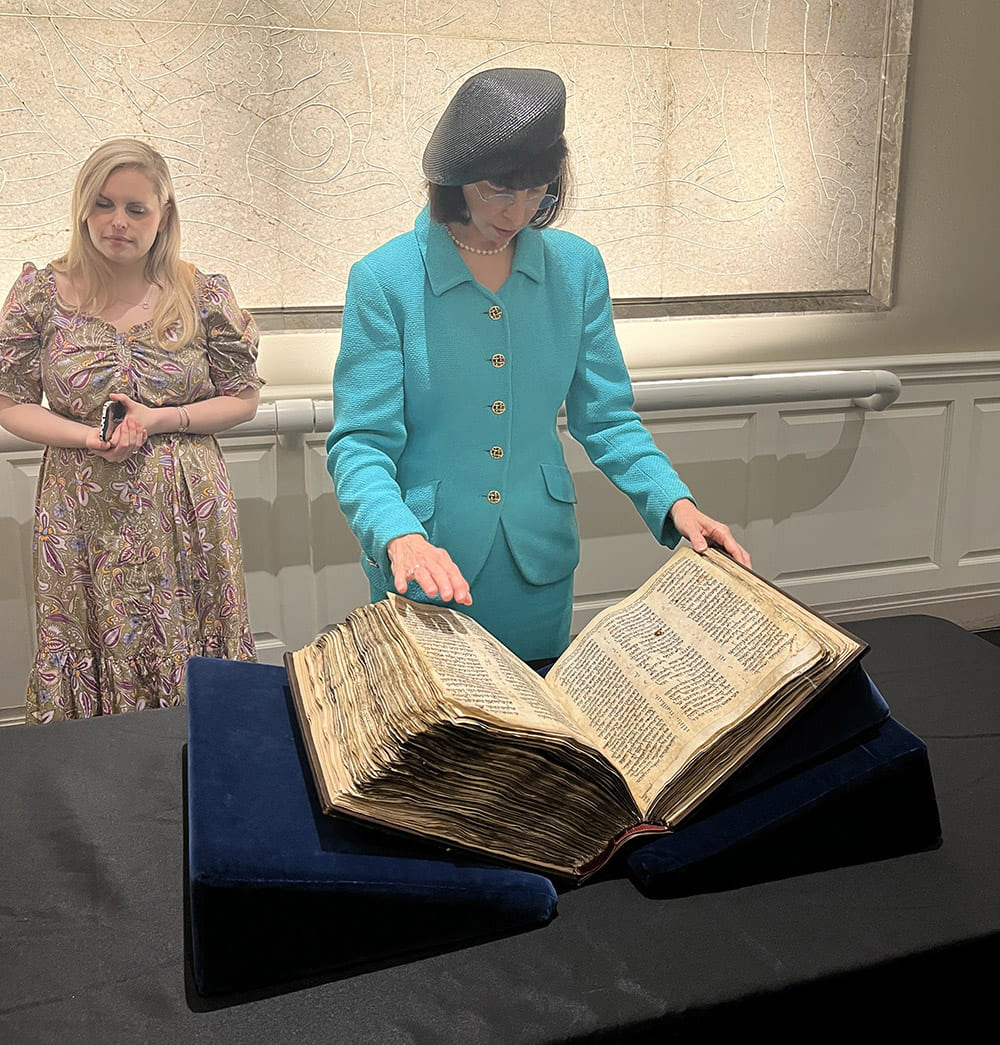|
Getting your Trinity Audio player ready...
|
By: Hellen Zaboulani
The world’s most ancient, and complete Hebrew bible known in existence today, is up for sale, asking roughly $50 million.
As reported by the Wall Street Journal, the antique, which is estimated to be about 1,100-year-old is currently owned by Jaqui Safra, a financier and investor from Geneva. He has been holding on to treasure for decades, and has tapped Sharon Liberman Mintz, the leading top Judaica specialist at Sotheby’s to find a buyer at auction. The carefully preserved artifact will hit the auction this week, on May 17th, with an estimated price tag of between $30 million and $50 million. Putting a number on so rare a manuscript was not an easy task, and Ms. Mintz has been pouring over the 26-pound, 726-page manuscript for the past year, in an attempt to quantify the appropriate value. The sheets of bound sheepskin parchment date back to circa 900, making it a wonder just to hold something from that era. In addition to its value as a holy manuscript, it is also extremely old and rare– both older and infinitely rarer a find than a Picasso painting.
As per the WSJ, if the sacred bound bible is sold at the high end of the estimate, it will become the single most expensive book or manuscript ever sold anywhere in the world. Currently, that distinction belongs to a rare copy of the U.S. Constitution auctioned in 2021 for $43.2 million. While there are 13 remaining copies of the Constitution, this bible being auctioned is one of a kind, with nothing else even to compare. The Codex Sassoon, as the manuscript has been named by Sotheby’s, includes two dozen books of the Hebrew Bible, and is missing just 15 of the 929 chapters of the Hebrew Bible. By comparison, the Aleppo Codex is less complete, and the Leningrad Codex is not as old, which is what makes this artifact so priceless. “You feel like you’re able to touch a millennium of history,” said Ms. Mintz.
For her part, Ms. Mintz is a foremost expert in Hebrew illuminated manuscripts, having first been hired in 1987 as the curator of Jewish art for the Jewish Theological Seminary’s library. Since 1995, she has a served as Sotheby’s senior consultant for books, manuscripts and textiles, playing an irreplaceable role in the auction house’s biggest Judaica sales. Her job entails not only appraising manuscripts, but also sourcing them—which includes forging relationships with collectors who may eventually want to buy or sell sacred documents. Mr. Safra, 83, who is a descendant of the Syrian Lebanese-Swiss Jewish Safra banking family, first became a client of Ms. Mintz in 2015.
He had invited her to Geneva to appraise his manuscripts and review his collection. She called this type of meeting the most exciting part of her job. “You never know what you’re going to find,” Mintz told the WSJ. “Nothing compares with the excitement of walking into a private collection and encountering things you haven’t seen before.” That meeting was when she first laid her eyes on Mr. Safra’s prized Bible. The rare artifact has been traced back more than 1,000 years to Israel or Syria. It had disappeared mysteriously for over 500 years, but resurfaced in 1929, being purchased by prominent Judaica collector David Solomon Sassoon, who wrote a check for 350-pounds. In 1978, it was auctioned by Sotheby’s for $320,000, and then again the auction house sold it in 1989 this time for $3.2 million. Shortly after that auction, Mr. Safra acquired the bible for $4.2 million.




